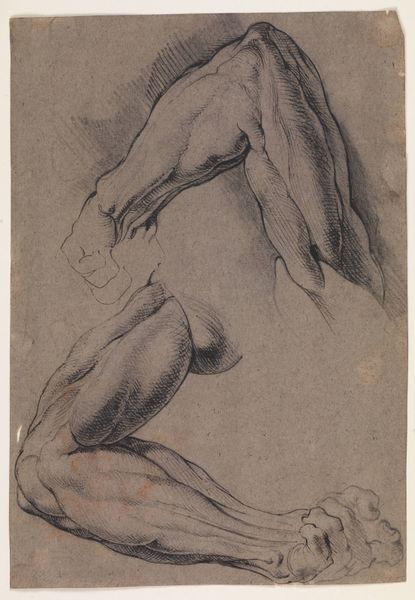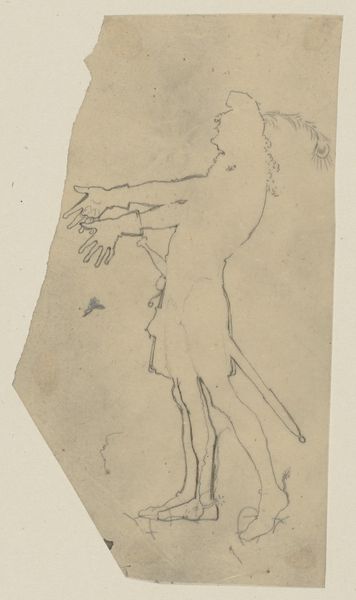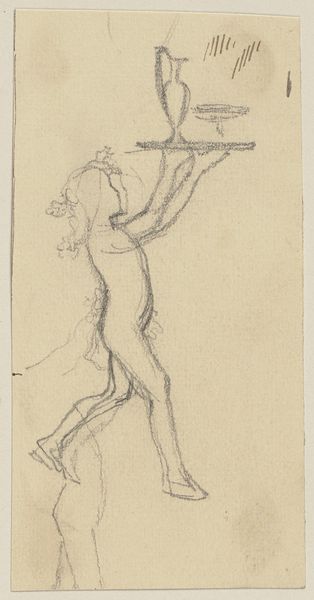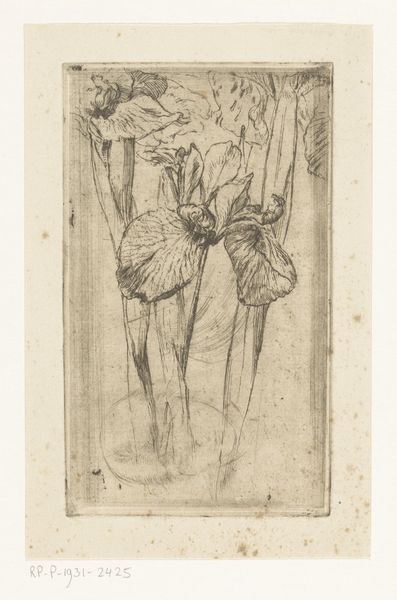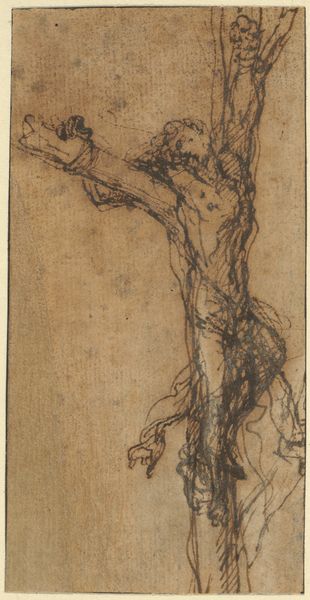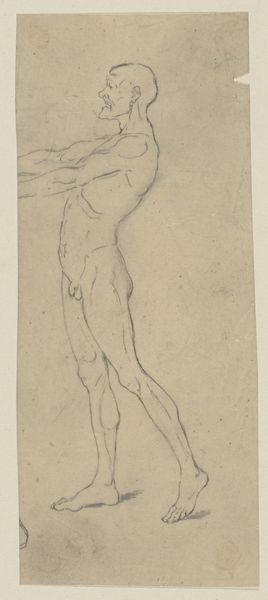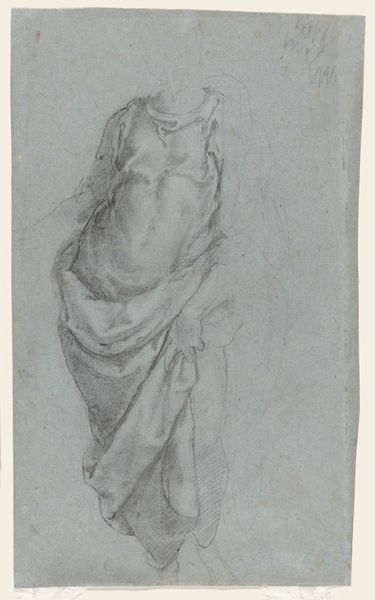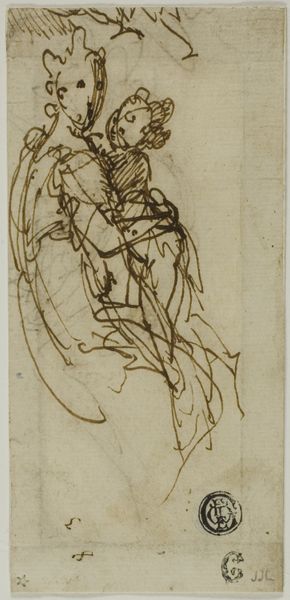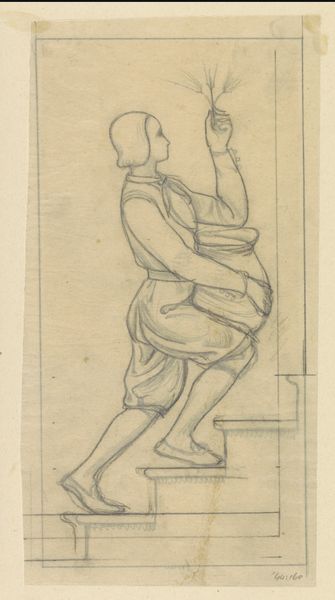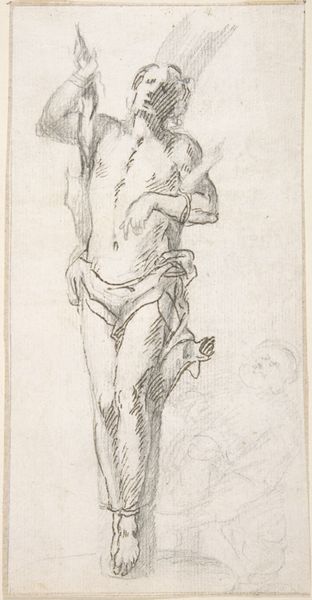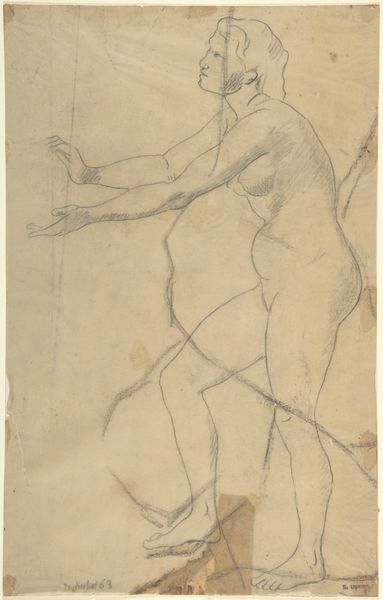
drawing, ink
#
portrait
#
drawing
#
figuration
#
11_renaissance
#
ink
#
italian-renaissance
Dimensions: height 194 mm, width 76 mm
Copyright: Rijks Museum: Open Domain
Curator: Here we have Raffaele da Montelupo’s “Spierstudie van mannelijk rugfiguur,” a drawing likely rendered sometime between 1515 and 1566. It appears to be ink on paper, offering a detailed study of a male figure’s back and leg muscles. Editor: My initial impression is one of tension. There's a palpable sense of straining effort in the figure's posture, even though it’s just a sketch. The lean linework heightens that feeling, somehow. Curator: Indeed. The focus on musculature reflects a core interest of the Renaissance – a fascination with human anatomy and the idealised form, seen here in how Montelupo meticulously outlines and defines each muscle group. This emphasis stems partly from renewed study of classical sculpture and a desire to understand human mechanics, the “divine machine,” if you will. Editor: Right. But I think it is vital we consider this idealization within its power dynamics, even today. We should question whose bodies are worthy of such artistic veneration? How do these portrayals continue to shape our notions of masculinity, physical capability, and even beauty? Is it only celebrating physical form, or dominance as well? Curator: I appreciate that intervention. To add to your thinking, I see the symbols of power also manifest here. For example, it represents not just physical strength but, possibly, references the importance of male patronage within the artistic community and throughout Renaissance society at the time the study was created. Think too of Michelangelo, another artist consumed with such powerful musculature! Editor: Exactly. And Michelangelo’s David, say, becomes the prototype. So considering the symbol and how it gets employed is as important as simply saying that "the figure is in tension." Curator: Precisely. We should also recognize that these drawings served practical purpose as studies for larger sculptural or painted works, and Montelupo worked in both of those formats. So it shows a work in progress that became associated with particular symbolism as a function of time. Editor: What becomes more fascinating, though, is tracing those continuous symbols forward across the decades to examine whose bodies don't make it into art. Thinking of the power of the missing images... Curator: Yes, I see it similarly: thinking about that artistic impulse is always ongoing. By observing what past generations thought about power, the Renaissance, for example, then informs our decisions moving forward, giving continuity, but change, over time.
Comments
No comments
Be the first to comment and join the conversation on the ultimate creative platform.
